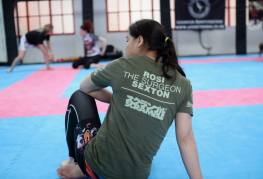
Two years ago, I retired from MMA competition. My last fight was on Cage Warriors against now UFC champion Joanna Jędrzejczyk. I knew at the time that it was probably going to be my last outing; after 12 years in the sport, it was time to move on and do other things.
2016 has seen both the return of Cage Warriors to the UK, and TUF23 pitting Jedrzejczyk against Claudia Gadelha as the first pair of coaches from the women’s 115 lbs division. Three English women competed – Kate Jackson, Lanchana Green and Helen Harper. It’s a good time for European and women’s MMA, and it seems a good time to reflect on life after fighting.
As far as the MMA world is concerned, retirement is the end of the book. What happens after a fighter hangs up their gloves is something that we don’t generally give a lot thought to – often including the fighters themselves. An MMA career is a story in its own right, with its highs and lows, and we may forget that it’s just a chapter in something larger. Perhaps this is one of the reasons athletes find retirement so difficult; it’s seductive to keep chasing after that Hollywood ending (the one where we make another comeback, win a world title, and go out on a high) long after it makes any sense, because that’s how we want the story to finish.
In reality, though, the book doesn’t end there. Every fighter however famous or successful will, sooner or later, experience the point in their life when the cameras stop rolling, and the fans move on – but life continues regardless. There are still blank pages to be filled, whether we’ve thought about it or not.
“Do you miss fighting?”
I’m asked this question often, and yes, I do – all the time. There’s certainly plenty I don’t miss about the fight world. I don’t miss the politics of MMA, or trying to balance fighting and making a living, or sacrificing time with friends and family, missing out on celebrations and holidays. I don’t miss feeling constantly sore and exhausted from training, worrying about injuries, or having to train through pain when my body’s telling me to rest. But despite all that, there’s something about competing in MMA that nothing will ever quite replace for me.
I miss being in the gym with my team mates every day, being part of that team effort, and the sense of family that goes along with that. I miss the excitement of having a big fight coming up, the drive to train harder, being pushed to the limits of what I can do, and realising that I’m capable of more than I imagined. I miss the intensity of competition, the feeling just before a fight when everything is sharp and bright and I’m truly alive.
We find pieces of that in other places. Many former fighters coach, which brings its own unique rewards as well as being a substitute for what we miss. I still train jiu-jitsu, and have plans to start doing some grappling competitions again; it’s not all-consuming for me in the same way that MMA was, but it’s easier to balance with a career and family. Leaving the world of professional fighting behind has meant re-evaluating my relationship with the sport that consumed so much of my life, and looking again at what I love about it now that I’m away from the distraction of the big shows and fans and the media. I’m training for the sake of training, and not because I’ve got a fight coming up. This involves a whole different mindset that still seems alien at times.
The last couple of years have given me the opportunity to focus on some other things. Life is all about trade-offs. We have only a limited time on this planet, and there’s a lot to see and do in that time. Doing one thing to a high level means making sacrifices and giving up opportunities elsewhere. There’s a time for that, certainly, and I’m glad that I did; but I’m taking the chance now to explore other sports and learn some new skills. I’ve started climbing: there’s something about getting to the top of a hard route that I’ve been working on or being out on the rock, halfway up a cliff face, that pushes some of those same buttons that fighting once did. It’s not the same, of course, but it’s opened my eyes to a whole new set of challenges.
As a fighter, it’s easy to put off things that are important in the long term, but not as immediately attention grabbing as that fight coming up. Finances, long term plans, investing in the future – the boring stuff. Fighters are really good at delaying gratification, as long as it’s on an eight week schedule. Anything happening after fight day was on “the other side”; it might as well have been the distant future. Over the last few years of my fight career, I became aware of a growing list of things that I was avoiding dealing with: some practical, some personal. Perhaps, in a sense, being a professional fighter had become a way of running away. You can only postpone the future for so long, though, before it catches up with you.
Fighting is inherently a selfish pursuit – it has to be. It means focusing on what you need to do, putting your training and preparation first at times when you’d rather not. The sacrifices we make inevitably affect the people around us, and put a strain on families, relationships and friendships. It feels good, now, to be able to skip training sometimes and spend time with my partner instead, or to go and watch my son play football. I’m enjoying spending weekends with my family, or outdoors falling off a bit of rock instead of in a gym, sports hall or arena.
The relative stability since I stopped competing has been good for me, but even after two years I’m still adjusting to it. Fighting is about negotiating a series of crises; and to quote Chekhov “any fool can handle a crisis, it’s the day to day living that wears you out”. Fighting can be stressful, but that kind of stress is balanced by the simplicity of having a single minded focus. Get up, eat, go training; day to day decisions comes down to “will this help me win the fight?”. Everything centers around that one goal, and other stresses fade into the background. It’s tough, but simple; the sort of stress that comes in a definite form, with a straightforward plan of action: train until you’re too tired to worry about it, sleep, then train some more. Getting things done without the pressure of a fight to concentrate my mind is a skill I’m now having to work at; it turns out that after a decade of lurching from one adrenaline spike to the next, adapting to a more comfortable and sustainable routine doesn’t always come naturally.
I knew when I retired from MMA competition that I didn’t want to spend the rest of my life looking backwards. It was a chapter of my life; one that I’m proud of, and that I learned a great deal from – but I’m keen not to define myself by what I’ve done in the past. Part of the challenge of building a career away from the sport has been letting go, not clinging too tightly to what was or what might have been, but looking to what lies ahead. I’m fortunate to have a job that I love, that allows me to continue working with fighters and athletes as well as the general public. I’ve got a great relationship and family, I’m in the process of building a business and I’ve got plans that I’m excited about for the future. Life is good.
I know that this makes me one of the lucky ones. Being a professional MMA fighter is taking a gamble; however talented you are and however hard you work, there are no guarantees. For every fighter who is successful and walks away on their own terms, there are many, many more who sacrifice careers, relationships and physical health to the sport only to be left with little more than memories to show for it. Few MMA fighters get into the sport primarily for the money (there are certainly easier ways to earn it). We’re caught up in the adventure; young enough to feel that we’re indestructible and have all the time in the world – and it’s all too easy not to notice the other opportunities slipping by until it’s too late.
I think it’s helpful to look at a professional MMA career for what it is – a short segment of our lives, not all of who we are. If I were to offer any advice to someone starting out in the sport, it would be to put your heart and soul into it, for sure – more so, because you have a limited time to do it – but give some thought to what comes afterwards. Don’t neglect life outside fighting, because one day you’ll need it.
“To every thing there is a season, and a time to every purpose under the heaven.” – Ecclesiastes
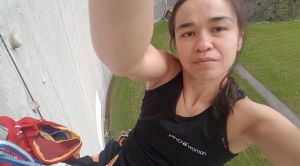 “The next time someone says to me ‘oh, it’s not hard, it’s just sustained’, I think I’m going to punch them in the teeth” – Steve, 3rd belay point.
“The next time someone says to me ‘oh, it’s not hard, it’s just sustained’, I think I’m going to punch them in the teeth” – Steve, 3rd belay point.

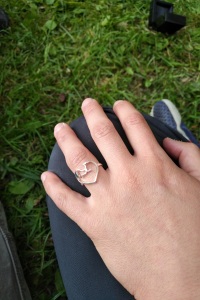
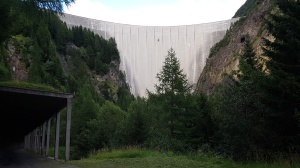 After flying in to Milan airport this morning and then driving up to Luzzone, we got our first look at the dam this evening. This is what we intend to climb tomorrow (although if the weather isn’t good, or anything doesn’t go to plan, we’ve left Friday as our backup).
After flying in to Milan airport this morning and then driving up to Luzzone, we got our first look at the dam this evening. This is what we intend to climb tomorrow (although if the weather isn’t good, or anything doesn’t go to plan, we’ve left Friday as our backup).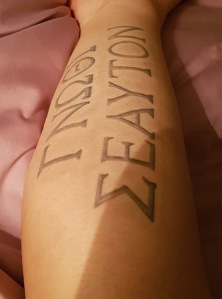 , though, my demons and I have gradually come to an understanding. They’re not tamed, exactly – they still get out of their box now and then and chew the furniture – but they’re generally under control. I’m fortunate to have an amazing partner who understands, and a good support network around me. I’ve figured out the things that work for me, and how to manage the occasional relapses. I have far more good days than bad days. Life is good.
, though, my demons and I have gradually come to an understanding. They’re not tamed, exactly – they still get out of their box now and then and chew the furniture – but they’re generally under control. I’m fortunate to have an amazing partner who understands, and a good support network around me. I’ve figured out the things that work for me, and how to manage the occasional relapses. I have far more good days than bad days. Life is good.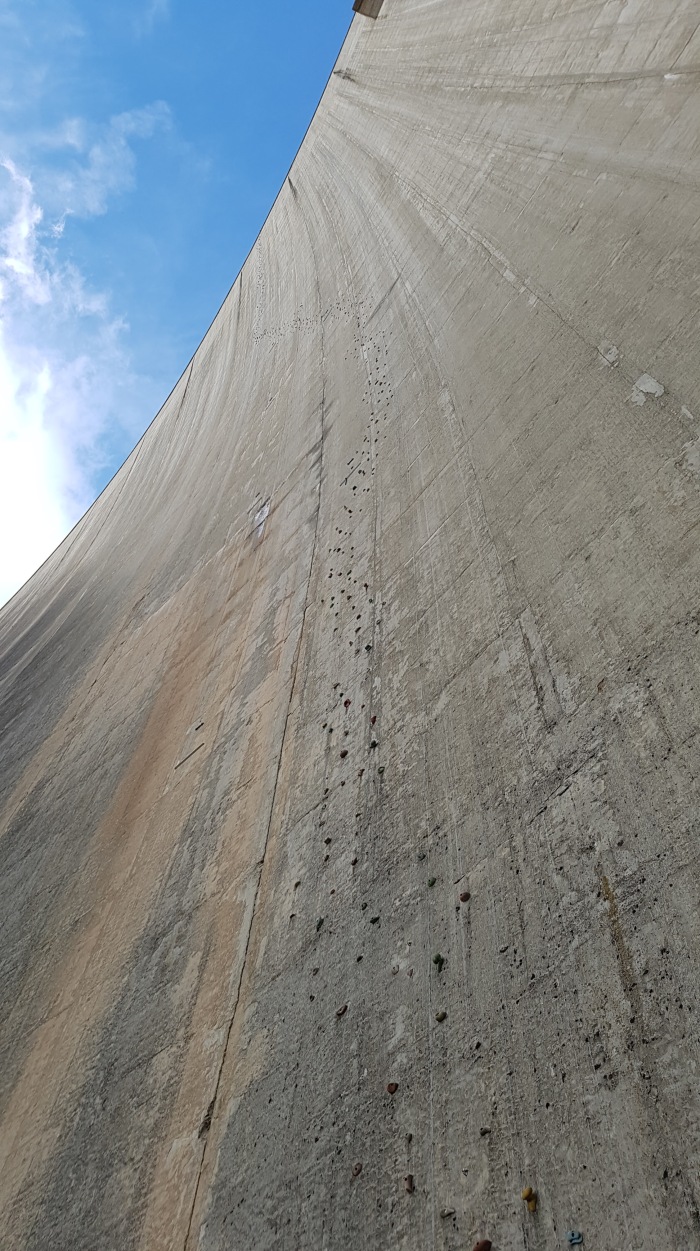
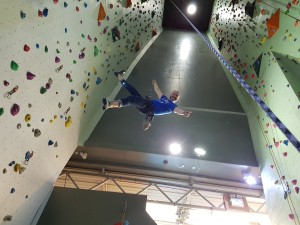 Aside from our regular sessions at the local climbing wall, where we’ve been climbing lots of laps for endurance, we’ve also made a few trips outdoors to work on our skills and “head game”. As competent, but not particularly experienced, climbers one of the biggest challenges with this climb is that – well, it’s just so bloody big. At least, compared to anything we’ve climbed before. Addressing the fitness needed for that is one thing – but trying to prepare ourselves for how it’ll feel 100 metres up is a whole other thing entirely.
Aside from our regular sessions at the local climbing wall, where we’ve been climbing lots of laps for endurance, we’ve also made a few trips outdoors to work on our skills and “head game”. As competent, but not particularly experienced, climbers one of the biggest challenges with this climb is that – well, it’s just so bloody big. At least, compared to anything we’ve climbed before. Addressing the fitness needed for that is one thing – but trying to prepare ourselves for how it’ll feel 100 metres up is a whole other thing entirely.
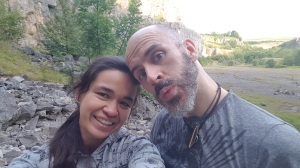
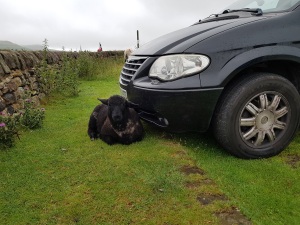 Sunday 16th was my birthday. There’s nothing like waking up on your 40th in the back of a van, with a couple of sheep trying to headbutt their way in to make you re-evaluate your life choices. Having done so, I think I’m rather pleased with mine.
Sunday 16th was my birthday. There’s nothing like waking up on your 40th in the back of a van, with a couple of sheep trying to headbutt their way in to make you re-evaluate your life choices. Having done so, I think I’m rather pleased with mine. Finally, last weekend we headed down to Portland with some friends. This was more of a fun outing for the kids – this close to the trip we only climbed a handful of routes and didn’t do a lot of serious training ourselves; but despite the patchy weather, a lot of fun was had.
Finally, last weekend we headed down to Portland with some friends. This was more of a fun outing for the kids – this close to the trip we only climbed a handful of routes and didn’t do a lot of serious training ourselves; but despite the patchy weather, a lot of fun was had. With the end of July approaching fast, things haven’t gone quite as smoothly as I’d have liked. Business has been hectic these last few weeks (I’m not complaining – please don’t stop booking in to see me!), but it’s meant a slow start to the training plan.
With the end of July approaching fast, things haven’t gone quite as smoothly as I’d have liked. Business has been hectic these last few weeks (I’m not complaining – please don’t stop booking in to see me!), but it’s meant a slow start to the training plan. Last week, we were down at Redpoint Worcester for another evening session. I can’t remember exactly how many routes we climbed, but it must have been a few, because I managed to take several chunks of skin off my hands. Just as well I don’t need those for work or anything… (oh, wait…). Some days, I swear I’m held together mostly by stubbornness and sticky tape.
Last week, we were down at Redpoint Worcester for another evening session. I can’t remember exactly how many routes we climbed, but it must have been a few, because I managed to take several chunks of skin off my hands. Just as well I don’t need those for work or anything… (oh, wait…). Some days, I swear I’m held together mostly by stubbornness and sticky tape.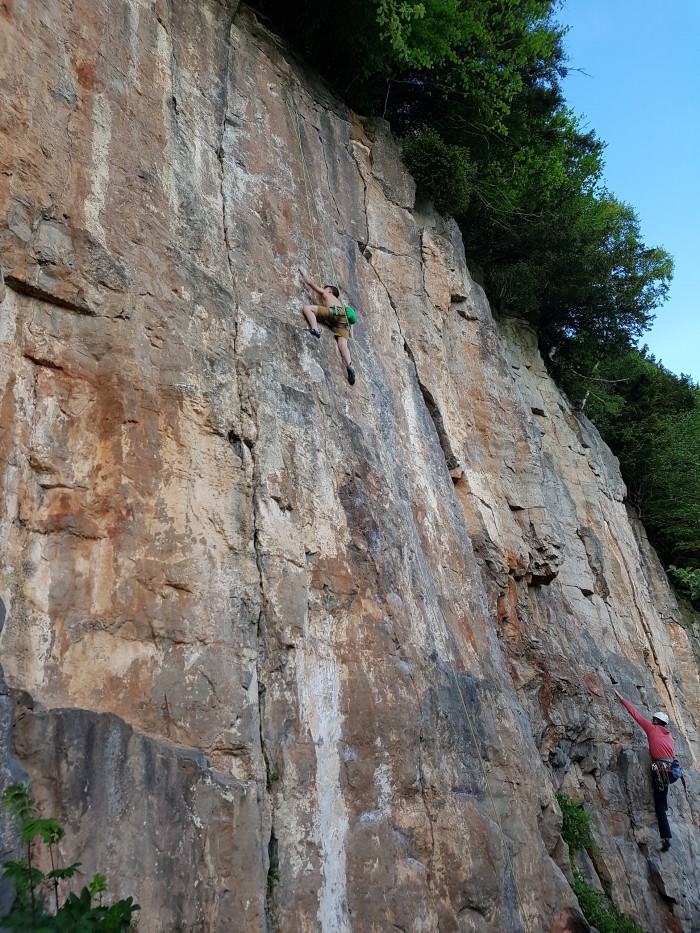
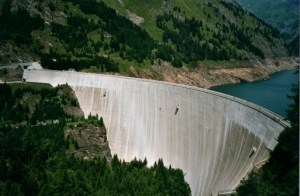 I know things have been a bit quiet round here. I’ve been meaning to reboot this personal blog for a while, but now I have a good reason to. I’m mostly keeping a record so that in a few months time, when I’m inevitably wondering “why on earth did I let myself get talked into this?” I’ll have a reminder.
I know things have been a bit quiet round here. I’ve been meaning to reboot this personal blog for a while, but now I have a good reason to. I’m mostly keeping a record so that in a few months time, when I’m inevitably wondering “why on earth did I let myself get talked into this?” I’ll have a reminder.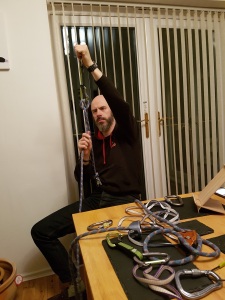
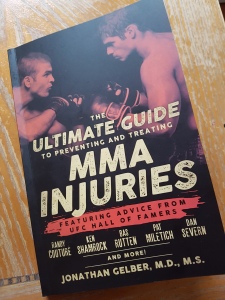 When I was offered a review copy of
When I was offered a review copy of 

 The last year has seen a lot of changes for me. Since I retired from MMA in 2014, I’ve been busy figuring out what I want the rest of my life to look like, getting my osteopathy business running smoothly, and making a start on some new projects.
The last year has seen a lot of changes for me. Since I retired from MMA in 2014, I’ve been busy figuring out what I want the rest of my life to look like, getting my osteopathy business running smoothly, and making a start on some new projects.